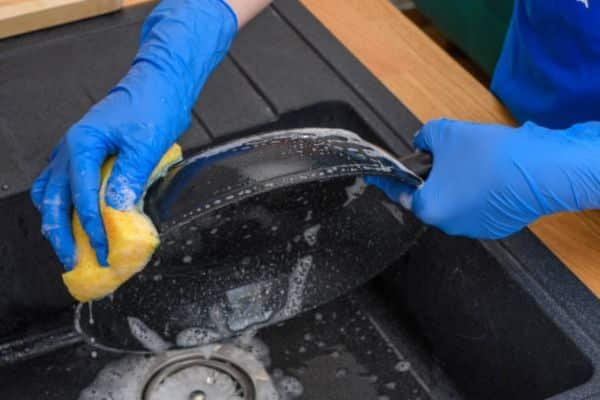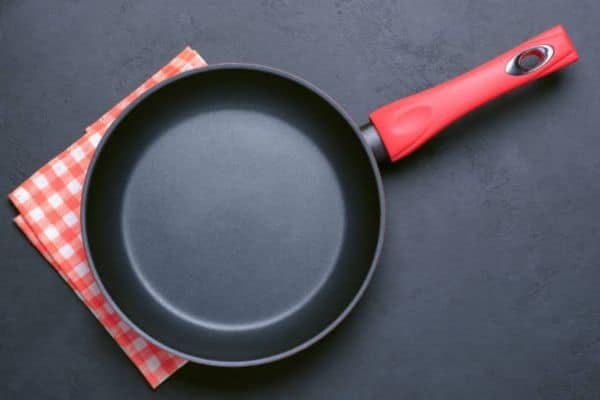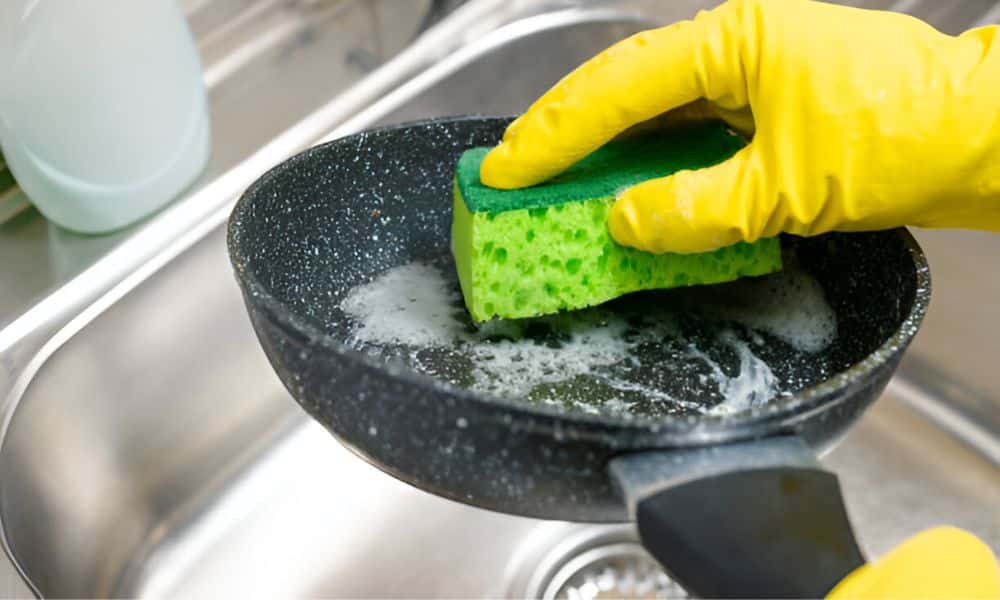Last week, I cooked steak in my old cast-iron pan. The sea was perfect. The meat was juicy. But afterwards, I left the pan on the counter. It dried out, with stuck-on bits everywhere. I stared at it and thought—“Not again.” Then I smiled. This wasn’t my first cast iron mess. Years ago, my grandmother taught me a trick that changed everything. It didn’t need soap, water, or stress. Just salt. That pan was spotless in five minutes. Today, I’ll show you how to clean a cast iron frying pan with salt. It’s easy, it’s gentle, and it works.
Why Salt Works for Cast Iron
Salt is coarse, but not too harsh. It scrubs off food without hurting the pan’s seasoning. Unlike soap, it doesn’t strip the protective layer built over time. This layer is what keeps your cast iron non-stick and long-lasting.
What I love about salt is that it’s always in the kitchen. No need for fancy cleaners. And it’s safe—no chemicals, no fuss. Just good old kitchen wisdom. If you’re also cooking small meals, like eggs, check out the Best Small Fry Pan for Eggs to get perfect results every time.
What You’ll Need
Before you begin, gather your tools:
- 1/4 cup of coarse salt (kosher salt works best)
- A clean, dry dish towel or paper towel
- A wooden spoon or spatula (for stubborn bits)
- A small amount of oil (like vegetable or flaxseed oil)
- A stovetop or oven to dry the pan
Simple, right? Let’s get started.
Step-by-Step: How to Clean a Cast Iron Frying Pan with Salt
Step 1: Let the Pan Cool Down

Hot pans are dangerous. Let yours sit for a few minutes until it’s safe to touch. You don’t want to burn yourself or crack the pan from sudden temperature changes.
I usually use this time to wipe the counter or put away ingredients. It makes the kitchen feel calm and ready.
Step 2: Wipe Out the Loose Bits
Take a paper towel or a soft cloth. Wipe the pan gently. Remove any grease or food that’s sitting on the surface. You don’t need to scrub yet—just get rid of the easy stuff.
Think of it like brushing off crumbs before setting a plate.
Step 3: Sprinkle Salt into the Pan

Take a handful of coarse salt and sprinkle it evenly. You want a thin layer across the bottom of the pan. Not too much, not too little—just enough to scrub without making a mess.
I use kosher salt. It’s big enough to clean, but not too rough on the iron.
Step 4: Start Scrubbing
Grab a folded towel or cloth. Use it to rub the salt in small circles around the pan. Focus on the parts with stuck-on food. The salt will act like sandpaper, lifting off the mess without scratching the surface.
I find circular motion works best. It gets into corners and scrapes just enough to clean without harm.
For stubborn spots, I use the edge of a wooden spatula to help scrape. Never use metal—cast iron can scratch easily.
Step 5: Dump Out the Salt

Once your pan looks clean, tilt it over the trash and shake out the salt. You’ll notice it has picked up grease, food, and dark bits. That’s a good sign.
Sometimes I rinse the salt down the sink, but usually I just toss it in the compost or bin. It’s done its job.
Step 6: Rinse Lightly (Optional)
This part’s tricky. Some folks never rinse. I do—lightly. A quick splash of warm water, then I wipe it dry right away.
You don’t want water sitting on the pan. That’s how rust starts.
I only rinse if there’s visible salt left. Otherwise, I move on to the next step.
Step 7: Dry the Pan

Use a fresh towel to dry it well. Every corner, every edge. You want it bone dry.
I often place mine on the stove and turn the heat to low. Just for a minute or two. This step removes hidden moisture and keeps rust at bay.
You’ll feel the warmth and see a slight shine start to come back.
Step 8: Oil It Up
Once dry, add a few drops of oil to the pan. Use a towel to rub it in. Cover the whole surface—bottom, sides, even the handle. The oil keeps the pan seasoned and ready for next time. Too much oil makes it sticky. So just a thin layer. Wipe away the excess.
Step 9: Store It Right
Don’t cover it with a lid. Leave it open so it stays dry. I keep mine on the stove or hang it on the wall. That way, it stays clean and looks beautiful, too.
Every time I see it, I remember all the meals it helped create.
Bonus: Tips for the Best Results
Over the years, I’ve picked up a few tricks. These small habits make a big difference:
Never Soak Your Pan
Water is cast iron’s enemy. It causes rust and weakens the seasoning. Always dry your pan right away.
If the mess looks scary, don’t panic. Just add salt and scrub. It works—even after a burnt steak.
Use Heat to Help Clean
Sometimes I heat the pan for a minute before scrubbing. It softens the food bits and makes cleaning easier.
Not too hot—just warm enough to loosen what’s stuck.
Refresh the Seasoning Often
Once a month, I give my pan a full oil rub and bake it upside down in the oven at 375°F for an hour. This keeps the seasoning strong.
It’s like a spa day for the pan. You’ll see it get smoother and shinier with time.
Keep It Simple
Don’t fall for fancy tools. All you need is salt, oil, and care.
I once tried a special cast iron cleaner. It left residue and made the pan sticky. Salt never fails.
Involve the Family
I’ve shown my kids how to clean with salt. It teaches them respect for tools and the joy of real cooking.
Sometimes we make pancakes together right after. It’s a full circle moment—clean, cook, repeat.
Why This Method Works So Well
Cleaning with salt isn’t just easy—it’s also kind. It protects your pan. Keeps your food safe from soap. It honors the history of cast iron cooking.
You’re not just cleaning. You’re preserving a legacy.
Cast iron pans are more than cookware. They’re family heirlooms. They hold stories, smells, and memories. Each time you clean with salt, you’re keeping those alive.
Final Thoughts
There’s something honest about this method. It feels right. It connects you to the past, while preparing for the future.
I’ve cleaned my cast iron with salt hundreds of times. It works after Sunday breakfast, after late-night stir-fry, even after a camping trip. Simple. Reliable. Timeless. If you’ve got a cast-iron pan in your kitchen, treat it like a friend. A little salt, a little care—that’s all it takes. Now go make something delicious

